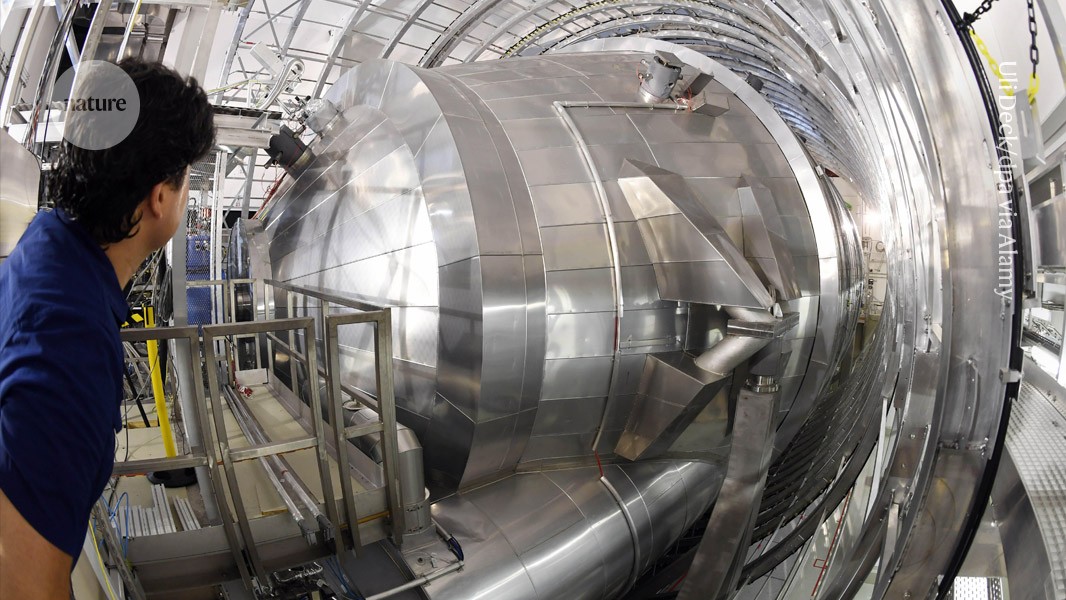Physicists narrow down neutrino’s mysterious mass

Blimp-shaped experiment shows the particle is at least one million times lighter than an electron

The main spectrometer of the Karlsruhe Tritium Neutrino (KATRIN) experiment.Credit: Uli Deck/dpa via Alamy
The most advanced attempt yet to weigh neutrinos has put a new upper limit on the enigmatic particle’s mass. It is no heavier than 0.45 electron volts (eV) — less than one-millionth the mass of an electron, the next-lightest known particle at 511,000 eV. The results were described on 10 April in Science1.
To this day, neutrinos are the only elementary particles whose mass is unknown. Measuring it could provide a crucial clue to how the particle acquires its mass in the first place — whether through the Higgs boson, as all other massive particles do, or through some other mechanism yet to be discovered, says Susanne Mertens, a physicist at the Max Planck Institute for Nuclear Physics in Heidelberg, Germany. Knowing their mass could also shed light on how neutrinos originating from the Big Bang have influenced the formation of galaxies, she adds.
Enjoying our latest content?
Login or create an account to continue
- Access the most recent journalism from Nature's award-winning team
- Explore the latest features & opinion covering groundbreaking research
or
Sign in or create an accountdoi: https://doi.org/10.1038/d41586-025-01157-1
This story originally appeared on: Nature - Author:Davide Castelvecchi

















